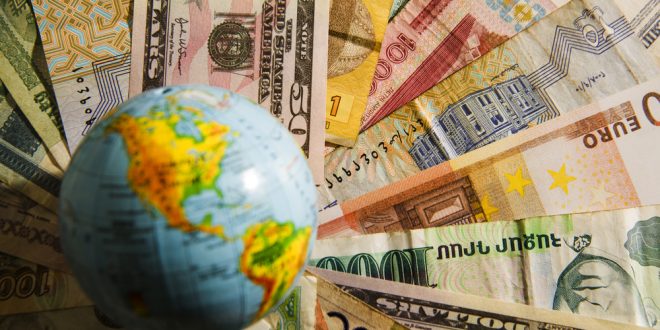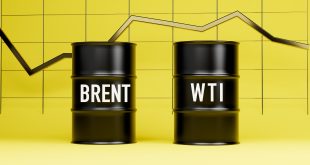The Standard & Poor’s 500 and Nasdaq indexes fell at the close on Wall Street on Thursday, affected by the decline in Tesla and Netflix shares after the release of their quarterly results, but the Dow Jones Industrial Average closed higher for the ninth consecutive day, thanks to Johnson & Johnson’s gains after announcing strong annual expectations.
Tesla shares fell after the electric car maker recorded an overall decline in its profit margins in the second quarter to the lowest level in four years, and Elon Musk, the company’s CEO, indicated the possibility of further decline.
Netflix also fell after the video broadcaster’s quarterly revenue missed estimates.
However, the Dow Jones managed to rise, with Johnson & Johnson achieving gains after publishing results
indicating an increase in annual profit expectations.
The number of Americans filing new applications for unemployment benefits unexpectedly declined last week, indicating continued strength in the labor market.
On Thursday, the Labor Department said first-time applications for state unemployment benefits fell by 9,000 to 228,000, when adjusted for seasonal factors, in the week ending July 15.
Oil
Oil prices rose by more than a dollar a barrel on Friday, supported by mounting evidence of supply shortages in the coming months and the intensification of the conflict between Russia and Ukraine that would lead to continued declines in supplies.
Brent crude futures rose $1.43, or 1.8 percent, to reach $81.07 a barrel upon settlement, while US West Texas Intermediate crude futures rose $1.42, or 1.9 percent, to settle at $77.07 a barrel, its highest level since April 25.
Russia continued to bomb Ukrainian food export facilities for the fourth day in a row on Friday and seized ships in the Black Sea, in an escalation of conflict in the region since Moscow withdrew this week from the United Nations-brokered agreement to export grain through the Black Sea.
The US Energy Information Administration said on Wednesday that crude oil inventories shrank amid a jump in crude exports and increased refinery utilization.
Meanwhile, investors welcomed the economic stimulus measures aimed at shoring up China’s sluggish economy.
Data from the world’s second largest oil consumer indicates that the government’s annual growth target of 5 percent will not be met.
Europe
European stocks rose on Friday, ending the week’s trading on the upside, while German stocks closed lower, as SAP’s earnings expectations hit the technology sector, which also recorded its biggest weekly decline this year.
Shares of software company SAP fell 4.2 percent after the company cut its full-year forecast, sending Germany’s DAX down 0.2 percent.
The pan-European STOXX 600 index rose 0.3 percent at the close, extending its gains for the fourth consecutive session.
The technology sector index in Europe fell 0.4 percent, to be the biggest loser among the major sectors this week, with a decrease of 4.8 percent.
The mining sector index fell 1.5 percent, hit by some disappointing results.
The pan-European Stoxx 600 rose 0.9 percent this week, boosted by a rally in British stocks after evidence of slowing domestic inflation.
London’s FTSE 100 rose 3 percent this week, its best level in nearly four months.
Gold
Gold prices fell on Friday, as the dollar rose to its highest level in more than a week, after positive data for the weekly jobs report in the United States renewed uncertainty about whether the Federal Reserve will stop raising interest rates after an expected increase next week.
And by 0937 GMT, gold in instant transactions fell 0.4 percent to $ 1962.09 an ounce, but it is heading for a 0.4 percent increase this week.
US gold futures also fell 0.3 percent to $1,964.20 an ounce.
The Fed is widely expected to raise interest rates by 25 basis points on July 26. Expectations that this would be the last increase pushed gold to its highest levels in about two months on Thursday, heading for gains for the third week in a row.
The dollar index hit its highest level since July 12 after a sudden drop in weekly claims for unemployment benefits in the United States boosted bets that the Federal Reserve will continue to raise interest rates for a longer period.
The rise in the dollar affects gold because it makes it more expensive for buyers holding other currencies, and raising interest rates negatively affects the yellow metal because it increases bond yields, which raises the opportunity cost of owning it while it does not yield a return.
Among other precious metals, silver fell in spot transactions by 0.1 percent to $ 24.71 an ounce, while platinum rose 0.2 percent to $ 955.68 an ounce, and palladium rose 0.4 percent to $ 1283.10 an ounce.
 Noor Trends News, Technical Analysis, Educational Tools and Recommendations
Noor Trends News, Technical Analysis, Educational Tools and Recommendations





